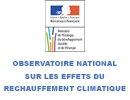Impact of Extreme Events Connected with Climate Change on French Mediterranean Hydrological Systems
Impact of Extreme Events Connected with Climate Change on French Mediterranean Hydrological Systems
This project follows on from previous studies coordinated by GICC, in particular the IMFREX and MEDWATER programmes, and its aim is to analyse changes in the features of extreme events (storms = strong swell and surges) at the regional scale of the Gulf of Lions, their geomorphological and hydrological impacts on coastal hydrological systems, and the application of public policy to the problem. The research brings together natural sciences (climatology, geomorphology, hydrology) and social sciences.
Whilst eustatic rise in sea level is a major issue associated with climate change, over the last few decades it has only accounted for around 10% of shoreline retreat in the Gulf of Lions (Sabatier and Provansal, 2000). At the local scale, sudden severe events (storms) represent a more significant risk, as they lead to erosion of beaches, breach of the dune ridge and flooding of low-lying coastal areas, thus threatening lagoon hydrological systems. In view of the increasing use of coastal areas and their role in economic development, it is important to obtain a clearer picture of coastal risks and to provide a scientific basis on which to establish “Coastal Risk Protection Plans” (Plans de Prévision des Risques Littoraux – PPRL).
It is generally acknowledged that climate change is likely to increase the frequency and severity of storms, but there are still various uncertainties at regional scale in the middle latitudes, due to variability between different climate models (Houghton et al., 1995). Whilst a trend towards increasing extreme events in the North Atlantic and North Sea has been demonstrated over the last few decades (Lamb, 1991, Warrick et al., 1993, Costa, 1997, Héquette and Vasseur, 1998), changes in the Mediterranean are not as clear-cut (Bruzzi, 1998).
These changes will be studied in detail in this project, on the basis of investigations into contemporaneous relationships (in the 20th Century) between meteorological conditions (wind and pressure in particular) and swell/surge data at several different timescales (interannual to multidecadal). A comparison between different records (Port-Vendres, Marseille, Grau de la Dent and Sète) will help isolate the “regional” signal and provide an idea of the specific local situation. The relationships that are demonstrated will enable us to propose surge/swell change scenarios based on pressure field and wind data produced by integrated general circulation models (GCM) forced by greenhouse gas increases. Different GCM versions will be used (Météo-France, Hadley Centre) in order to gain the most robust picture of swell/surge response to the climate change predicted for the period 2050-2100.
The situation regarding coastal morphological response (speed of retreat, frequency of flooding) is not clearly defined at present: we ask whether it is possible to define a threshold for morphogenetic intensity, or frequency of occurrence of different flood levels? At what point are the impacts of an event so severe as to be irreversible? Which has the greatest impact: the frequency of events or their severity? Using the body of data for the Mediterranean shoreline (Suanez, 1997, Bruzzi, 1998, Sabatier, 2001, Certain, 2002), we are now able to investigate a correlation between regional/local weather forcing and the geomorphological risk at different timescales (from the event to the long term), so as to identify patterns and stabilising or even replenishing effects and to determine the coastal hydrological systems’ fragility thresholds. From the hydraulic point of view, sea level represents a hydraulic load which determines whether or not there will be surface runoff from or into the lagoons; it also determines underground salt water intrusion via the salt wedge, when the water level in the lagoons is lower than that of the sea. The research will analyse the limiting conditions for hydrological management of the environment in an extreme hydroclimate context, in order to facilitate discussion on the hydraulic management planning and/or regulations that need to be envisaged in response to predictable climate change effects.
This research has implications in terms of socioeconomic impacts and impacts on management of the coastal area. An understanding of the risk is vital for drawing up coastal risk protection plans (“PPR”s). One of the main issues that will arise is assessment of the damage and what adaptation policies should be followed, in terms of integrated coastal zone management. Costal defence developments cannot be carried out without the participation of the inhabitants concerned. The problem is one of governance, in terms of choices primarily between safety-oriented or adaptive defences (based on natural processes). An analysis of these processes will require field surveys involving both institutional and political decision-makers and local communities.
The project comes under the framework of the ‘ORME’ Zone Atelier (“workshop site”) and the ‘RESYST’ ORE (environmental research observatory), which provide regional scientific support. It has made use of the previously unpublished data of the Bouches du Rhône and Languedoc-Roussillon Maritime services, EID and CEREGE.
| Coordinators |
Vincent MORON, Université Aix-marseille 1 – UMR 6635 CNRS-CEREGE |
| Partnership |
Université Aix-Marseille 2 – UMR 6012 ESPACE, Equipe DESMID |
| Funding |
MEDD
|
| Budget |
165 000€ (including tax)
|




